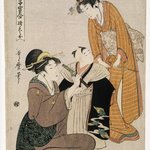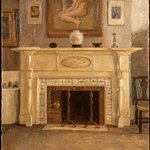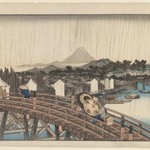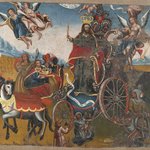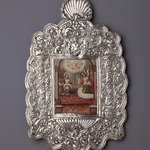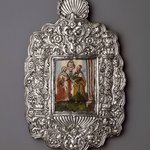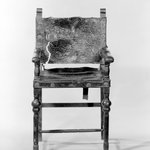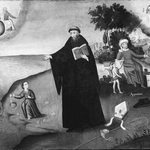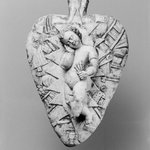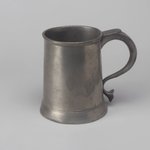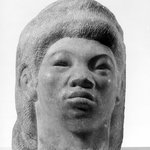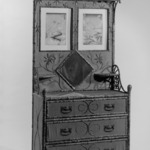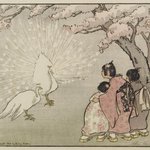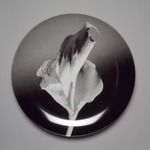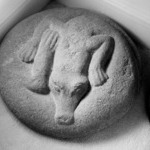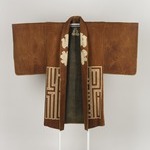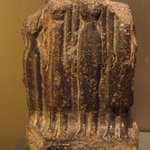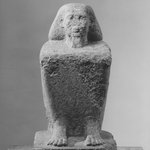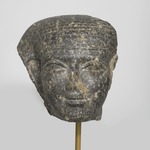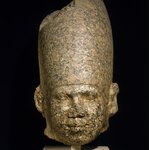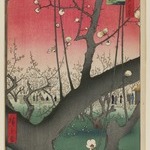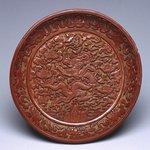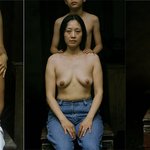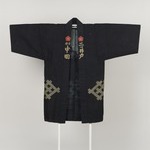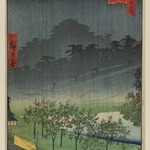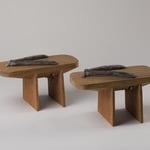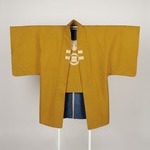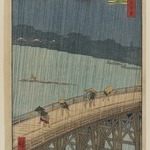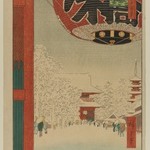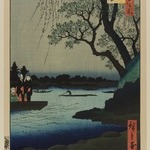Lantern (Ishi-doro)
Asian Art
The stone lantern, or ishi-doro, was originally intended for a religious shrine. The most magnificent example of lanterns in such a setting is the group of two thousand ishi-doro lining the approaches to the Kasuga Shrine in Nara. Made of granite from Sado Island in the Japan Sea, such lanterns ultimately derive from an Indian temple form, which helps explain the combination of Buddhist and indigenous Japanese Shinto motifs. The octagonal pagoda shape is here made in six sections, with a lotus-form base and finial and a central component with two openings suggesting the sun and the moon. A lamp or a candle is placed in the hollowed-out opening. The secular use of stone lanterns as garden ornaments dates from the Momoyama Period (1568–1600). Aged appearance, such as weathered or mossy stone, is highly admired as sabi, one of the Japanese traditional aesthetic values, which reflects resignation, loneliness, and tranquillity.
MEDIUM
Granite
DATES
18th century
PERIOD
Edo Period
DIMENSIONS
overall: 2809 lb. (1274.15kg)
component (a - base): 16 × 26 × 28 in. (40.6 × 66 × 71.1 cm)
component (b - column): 28 1/2 × 52 in. (72.4 × 132.1 cm)
component (c - hexagonal spacer): 9 1/2 × 26 1/2 × 26 in. (24.1 × 67.3 × 66 cm)
component (d - light box): 16 × 19 1/2 × 17 1/2 in. (40.6 × 49.5 × 44.5 cm)
component (e - roof): 16 × 41 × 41 in. (
(show scale)
ACCESSION NUMBER
77.139a-f
CREDIT LINE
Gift of Josephine Vallin Rosenberg in memory of Louis Rosenberg
PROVENANCE
Prior to 1977, provenance not yet documented; by 1977, acquired by Josephine Vallin Rosenberg of New York, NY; October 12, 1977, gift of Josephine Vallin Rosenberg to the Brooklyn Museum.
Provenance FAQ
MUSEUM LOCATION
This item is not on view
CAPTION
Lantern (Ishi-doro), 18th century. Granite, overall: 2809 lb. (1274.15kg). Brooklyn Museum, Gift of Josephine Vallin Rosenberg in memory of Louis Rosenberg, 77.139a-f. Creative Commons-BY (Photo: Brooklyn Museum, 77.139a-f_installation_SL1.jpg)
IMAGE
overall, 77.139a-f_installation_SL1.jpg. Brooklyn Museum photograph
"CUR" at the beginning of an image file name means that the image was created by a curatorial staff member. These study images may be digital point-and-shoot photographs, when we don\'t yet have high-quality studio photography, or they may be scans of older negatives, slides, or photographic prints, providing historical documentation of the object.
RIGHTS STATEMENT
Creative Commons-BY
You may download and use Brooklyn Museum images of this three-dimensional work in accordance with a
Creative Commons license. Fair use, as understood under the United States Copyright Act, may also apply.
Please include caption information from this page and credit the Brooklyn Museum. If you need a high resolution file, please fill out our online
application form (charges apply).
For further information about copyright, we recommend resources at the
United States Library of Congress,
Cornell University,
Copyright and Cultural Institutions: Guidelines for U.S. Libraries, Archives, and Museums, and
Copyright Watch.
For more information about the Museum's rights project, including how rights types are assigned, please see our
blog posts on copyright.
If you have any information regarding this work and rights to it, please contact
copyright@brooklynmuseum.org.
RECORD COMPLETENESS
Not every record you will find here is complete. More information is available for some works than for others, and some entries have been updated more recently. Records are frequently reviewed and revised, and
we welcome any additional information you might have.


